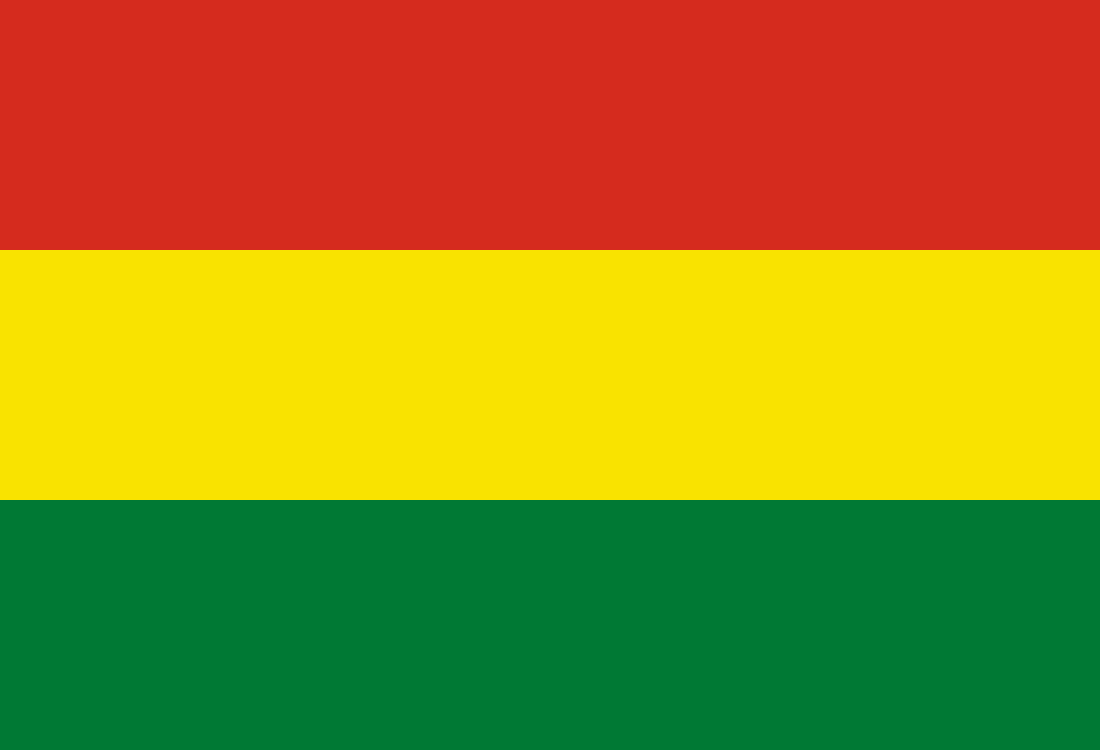The Bolivia flag features three primary colors: Red, Yellow, Green. The table below showcases the common and popular codes for these colors in HEX, RGB, and CMYK formats, along with Pantone (PMS), RAL, and NCS (Natural Color System) references. Remember, HEX and RGB codes are ideal for digital projects and web design (including HTML and CSS), while CMYK values are tailored for printing purposes.
The flag of Bolivia is a vibrant and historically significant national emblem that represents the country's rich culture, natural resources, and struggle for independence. Its design is both simple and deeply symbolic, reflecting Bolivia's unique heritage and aspirations.
Design and Elements:
Background:
- Colors: The flag is divided into three horizontal stripes of equal width: red (top), yellow (middle), and green (bottom).
- Proportions: The flag's width-to-length ratio is 2:3.
Coat of Arms:
- Position: Centered on the yellow stripe.
- Design: The coat of arms features a central oval shield surrounded by Bolivian flags and laurel branches, with an Andean condor perched on top.
- Colors: The coat of arms includes various colors, predominantly gold, red, green, and others.
Symbolism:
Red Stripe:
- Representation: The red color symbolizes the bravery and valor of the Bolivian people. It also represents the blood shed by those who fought for Bolivia's independence.
Yellow Stripe:
- Representation: The yellow color symbolizes Bolivia's wealth and mineral resources, particularly gold. It also signifies the country's desire for economic progress and prosperity.
Green Stripe:
- Representation: The green color symbolizes Bolivia's natural resources and fertile land. It represents hope, abundance, and the lush landscapes of the country.
Coat of Arms:
- Shield: The central shield within the coat of arms includes elements such as mountains, a sun rising over a blue sky, and an alpaca, representing Bolivia's geography, natural beauty, and indigenous heritage.
- Condor: The Andean condor symbolizes freedom and power. It is a majestic bird native to the Andes Mountains, which traverse Bolivia.
Historical Context:
The current design of the Bolivian flag was officially adopted on October 31, 1851. It was designed to replace an earlier version and has undergone modifications over the years to reflect changes in political leadership and national identity.
Overall Significance:
The flag of Bolivia is a cherished national symbol that encapsulates the country's identity, history, and aspirations. Its bold colors and intricate coat of arms embody Bolivia's diverse culture, natural wealth, and resilience. The flag serves as a source of unity and pride for Bolivians, celebrating their independence, cultural heritage, and commitment to progress. It is proudly displayed in ceremonies, events, and official functions, symbolizing Bolivia's place in the global community and its determination to shape its future.
